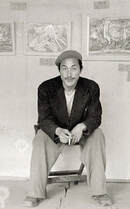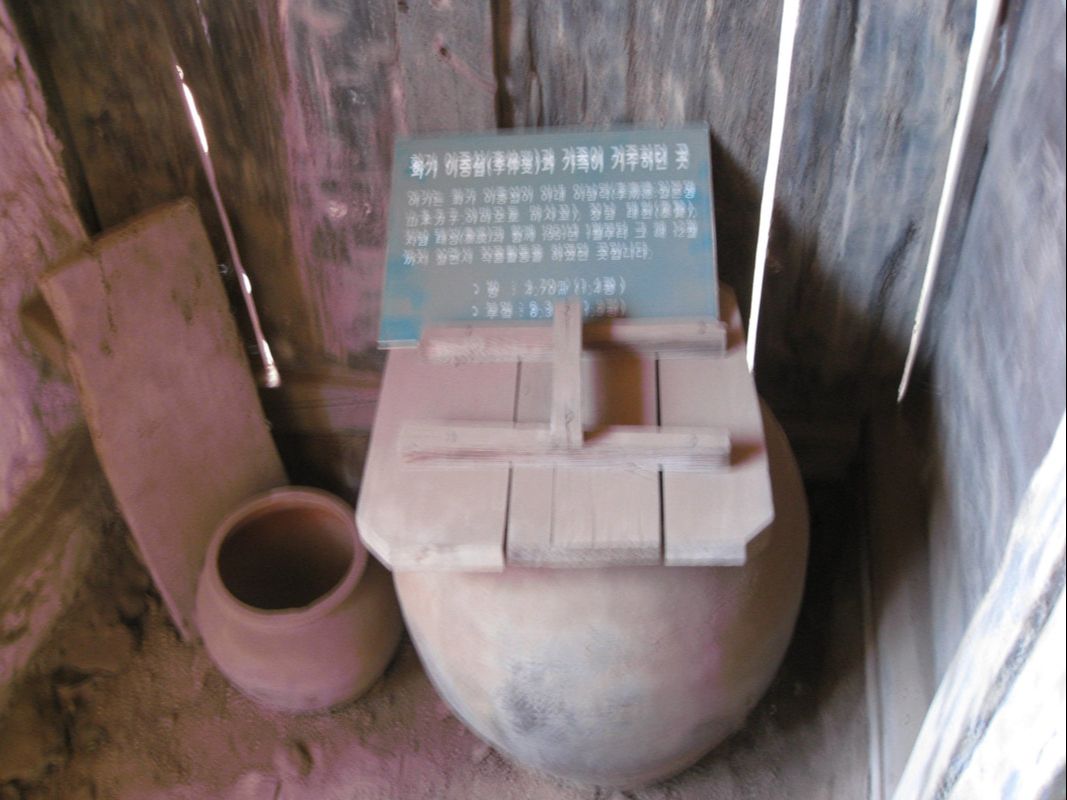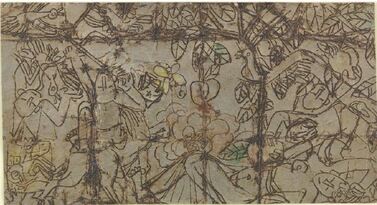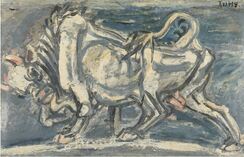Korean artist, Lee Jung Seob War and chaos have plagued the world for a long time. But there was a man that even plaque passed him for his optimistic life. I'm pleased to introduce him. His name is Lee Jung Seob(1916-1956), and one of the famous painter in Korea. He was born in now North Korean region of Pyeongwon, South Pyongan Province in 1916. Lee studied art in high school and, at his age 20, went abroad to Tokyo, Japan, to continue his art studies. His main art subject was an ox. At the time, the ox was something that reminded the Japanese of Korea, an animal that represented Korean people's sentiment. His ox must have meant more than just an animal. While studying in Japan, Lee met a young Japanese poet, Yamamoto Masako, and after graduation, they married and moved to the city of Wonsan, South Hamgyeoung Province. They had two sons, Taehyu and Taeseong. Yamamoto took on the Korean name Lee Nam-deok following their marriage in Korea. After returning to his hometown, he and his family faced the Korean War(1950). Lee and Masako fled the violence and economic ruin that enveloped Korea, first moving to Busan in South Korea, then to the island of Jeju. During refugee life in Jeju, he created paintings that portray children playing with crabs and fish, in cheerful colors. Lee's wife later recalled that it was the happiest time for the family, even though they suffered from poverty and wars. They lived in one room with a small kitchen. It was about 4.6 square meters, not enough to stretch their legs while they were sleeping. He also had no money to buy art material and resorted to drawing on the silver foil of cigarette boxes. Despite his struggle, war deteriorated everything and forced his wife to go to Japan with their two sons. He set numerous letters to his wife and children hoping that they would soon meet together. During this period, his painting some 160 pages, remain today, and some of them are being exhibited in Lee Jung Seob Museum. But poverty proved too big an obstacle for the artist. Aside from one week in 1953, Lee and his family would never be reunited. At this period, his painting was expressed to his despair and depression with gray and dark colors. To make matters worse, he lost his health and had to be frequently hospitalized. Without fulfilling his wish to see his family one last time, he died in September 1956 at the Red Cross Hospital in Seoul. Some days after his death, his friends visited the hospital and found out his passing. They were able to bury him only after paying unpaid hospital bills. His life was not a happy ending but nobody could catch the sadness and frustration in his paintings. in 2013, I visited his old house and museum in Jeju island. I got motivation and impression from his passion and artistic life. He seemed me to teach that even war can't stop drawing. There is no obstacle or excuse for continuing our artist's way. ▲ sources: https://arthistoryproject.com/artists/lee-jung-seob/ http://www.jejuweekly.com/news/articleView.html?idxno=5972 http://www.koreaherald.com/common/newsprint.php?ud=2-160606000338 https://www.hapskorea.com/lee-jung-seob-korean-artist-lost-soon/
0 Comments
Leave a Reply. |
Myungja Anna KohArtist Categories
All
Archives
July 2024
|
Proudly powered by Weebly







 RSS Feed
RSS Feed